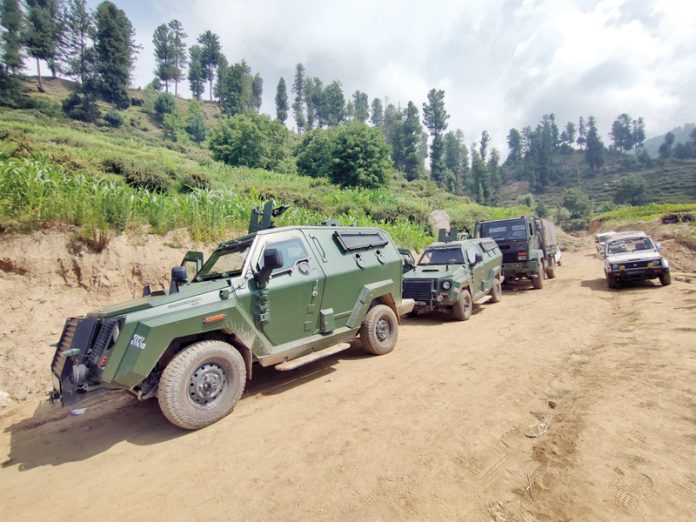In light of the surge in terrorist activities in the hilly regions of Jammu Division, the Ministry of Defence and the Ministry of Home Affairs have jointly decided to deploy the Army and paramilitary forces to preempt and counter these threats. This strategic move, executed with immediate effect, marks a pivotal shift in counter-terrorism efforts, aiming to restore peace and security in the affected areas. The hilly terrains of districts like Rajouri, Poonch, Doda, Kishtwar, Udhampur, Kathua, and Reasi have been hotspots for terrorist activities. Terrorists have been exploiting the natural caves and rugged landscapes as hideouts, launching attacks from elevated positions, and targeting security forces on isolated roads. This tactical advantage has posed significant challenges to conventional counter-terrorism operations, necessitating a revised strategy that leverages both manpower and technology. This comprehensive approach includes regular patrolling, establishing a strong presence in strategic locations, and conducting targeted operations to dismantle terrorist networks. The integration of Police, Special Operations Group, and Village Defence Groups further enhances the effectiveness of these operations.
One of the primary objectives of this deployment is to bolster the morale of the local population. The residents of these hilly areas have been living under constant fear of becoming collateral damage or direct targets of terrorist attacks. The presence of the Army and paramilitary forces is expected to act as a deterrent to terrorist activities, thereby instilling a sense of security among the villagers. The strategic dominance in these areas will relieve pressure on the local population from terrorists and their OGWs. This will likely lead to an increase in information from locals about terrorist activities. Concurrently, the Jammu and Kashmir Police must analyse this information thoroughly and tighten their grip on OGWs and other sympathizers. High-level coordination is essential at this stage to neutralise ongoing terrorist activities, with the role of the local police being of paramount importance.
The Army’s 9 Corps and the Delta Force of the 16 Corps have been at the forefront of this initiative. The deployment of additional personnel in the Kathua Hills and the twin districts of Udhampur and Doda reflects a focused effort to clamp down on terrorist activities. Historical sanctuaries for terrorists, such as Seoj Dhar, are being closely monitored and cordoned off to prevent any escape routes. The operational strategy also includes advanced surveillance using UAVs, the deployment of Special Forces, and sniffer dog units. These measures are designed to navigate the dense forests, deep valleys, and caves characteristic of the terrain despite adverse weather conditions like rain and fog.
One of the critical challenges in this mission is the threat of IEDs. The ongoing search operations are being conducted with the utmost caution to mitigate the risk of IEDs. The expanded search in Kathua, Udhampur, and Doda districts is aimed at flushing out terrorists and securing the region. Enhanced security measures have also been implemented along highways and other sensitive areas, particularly the routes of the Amarnath Yatra, to prevent any potential IED attacks.
The deployment of Army and paramilitary forces in the hilly regions is a decisive and strategic response to the escalating terrorist threat. This multi-faceted approach, combining ground operations with technological support, aims to neutralise terrorist activities and restore a sense of security among the local population. The strategic deployment in the hilly areas is not just a tactical manoeuvre but a vital step towards safeguarding the lives and livelihoods of the people. The renewed efforts of the MoD and MHA to combat terrorism will safeguard the region. The unwavering commitment of the security forces, coupled with the support of the local communities, will be instrumental in achieving lasting peace and stability in the region.
Trending Now
E-Paper


